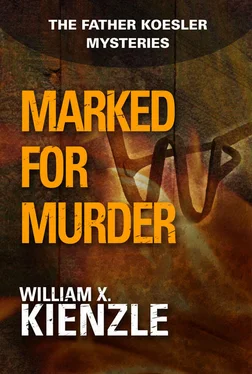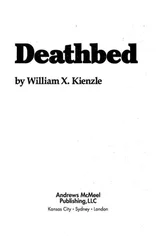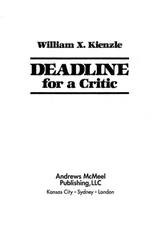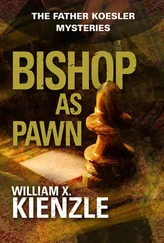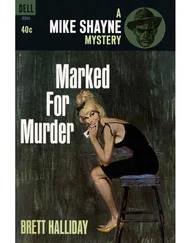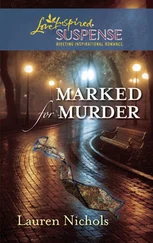“Point is, it doesn’t matter which parish I go to, which Father I talk to, everything comes down to I can’t tell any priest, ‘Yeah, Father, I know she went to your church sometime or ever.’ Point is, I could go to any church and the priest could tell me, ‘There is no reason to have El’s funeral here.’ Just like you just did.
“Point is, I came to you ’cause you’re a friend of Walt Koznicki’s. I figured I’d get a better than even break here. But . . .” Tully rose halfway out of his chair.
“Wait a minute.” Koesler waved him seated again.
Several moments of silence followed.
Tully correctly surmised that the priest was wrestling with his conscience.
Koesler was periodically reminded of a sort of reverse discrimination in the Catholic Church, at least in the Church of Detroit. Catholic churches in the city of Detroit were better able to bend, or even overlook, Church laws, rules, and regulations than suburban churches. And the more rundown the city area happened to be, the less official notice was taken of this freewheeling attitude.
The pertinent law in the burial of Louise Bonner was Canon 1184 of the revised Code of Canon Law, promulgated November 27, 1983. Paragraph three of Canon 1184 stated that ecclesiastical funeral rites are to be denied manifest sinners for whom these rites cannot be granted without public scandal to the faithful. Another paragraph added that if there was any doubt regarding a specific case, the local bishop was to be consulted and his judgment was to be followed.
The basic problem was, of course, did Louise Bonner qualify as a “manifest sinner”? Koesler’s conclusion was that she probably did. Not only was she a prostitute, but the local news media, in reporting her murder, had made her profession crystal clear.
But would her church burial cause scandal? This was a more difficult question. There were, after all, varying kinds of scandal. There was a genuine scandal that seldom was recognized as such. Koesler had long considered the church burial of Latin American despots a real scandal. Too often, he thought, the Church refused to face the hard decision and buried ruthless dictators. The fact that frequently such rulers were responsible for the torture and death of many innocent people, including priests and nuns, could easily identify them as manifest sinners.
Of course white-collar crime seldom was labeled manifest sin— unless it was committed by a Communist.
On the other hand, there was a type known as pharisaical scandal. In that instance, the scandal was in the eye of the hypocritical beholder. If there was any scandal to be had in the Church burial of Louise Bonner, Koesler was certain it would be of the pharisaical type. Was it not Jesus who said that harlots would be welcomed into the kingdom of heaven ahead of the self-righteous Pharisees?
Koesler was sure enough of the law’s application that he felt no need to solicit the opinion of Cardinal Mark Boyle, Detroit’s archbishop.
Once satisfying himself on the matter of law, Koesler was unconcerned about the possibility of scandal. It was the notoriety that troubled him. And this was where the problem of reverse discrimination reared its ugly head.
It was quite possible that Louise Bonner might be laid to rest from some all-but-deserted core city church with a minimum of publicity. But at a parish such as St. Anselm’s, it would be another matter. Koesler could visualize the TV cameras plus the radio and print journalists. He could stand opposed to pharisaical scandal anytime. He wasn’t so sure about notoriety.
But when Tully made as if to leave, it all gelled. In actual elapsed time, it took only a few moments to decide, especially since Koesler, earlier in the day, after he’d been alerted by the inspector, had pretty much resolved for himself the interpretation of Church law.
The expression on Tully’s face as he explained the futility of shopping for a parish to bury his friend had settled the matter. As Koesler saw it, on one side of the scale was the notoriety that would come to him and his parish. On the other was a police officer trying to do no less than a corporal work of mercy: burying the dead. And the deceased was a poor woman who’d lived a hard life and died a worse death.
So to hell with the notoriety.
“We’ll have the funeral, Lieutenant. And we’ll try to do our best for Louise—for El.” Koesler adopted Tully’s term of affection for the deceased.
Tully’s expression relaxed into a relieved smile. “Appreciate it, Father.”
Koesler opened a pad on the desk and began to take down information. The Mass of Resurrection—a term that had to be explained to Tully—would be Wednesday at 10:00 A.M. The matter of a rosary recitation was left in abeyance since no funeral home had yet been selected. Koesler would take responsibility for all the religious aspects of the funeral. Tully would see to the mortuary, the cemetery, and the pallbearers.
As he bade the officer good-bye, Koesler winced at the prospect of his immediate future now that he had agreed to take on this funeral. There would be notoriety. Of that there could be little doubt. And all he wanted was a quiet ministry among parishioners he’d come to know and love. Then, inevitably, there would be scandal; pharisaical, to be sure, but scandal nonetheless. Something with which he would be forced to deal. Doing what one realized was the right thing, was that really enough?
On top of all this, it was entirely possible that local Church officials would fault his judgment.
Undoubtedly, some priests would argue that Louise Bonner was not a “manifest sinner.” Rather, she was more sinned against than sinning. But those priests would not very likely be found in official positions in the Church. That, however, was not the bone of contention. The pivotal question was the matter of scandal. Here, nitpickers would split hairs over genuine versus pharisaical scandal.
When it came right down to it, it was not a matter of law. Koesler’s stand had nothing to do with any direct violation of Church law. It was, as with an umpire in some sports, a judgment call. One might argue that a base runner was out or safe. But the umpire’s decision would stand—subject, of course, to review.
Review, in the case of this burial, was the province of functionaries in the chancery and, of course, the archbishop, Cardinal Boyle. Koesler’s decision to grant ecclesiastical rites was not of a magnitude to spread beyond diocesan boundaries. He had no reason to expect it to be examined by an apostolic delegate in Washington, much less by the Pope.
And that was all to the good. While there was an abundance of unrest, distrust, suspicion, and condemnation in the Church on national and international levels, Cardinal Boyle remained amenable to reason and slow to denounce the judgment of one of his priests unless it was grossly incorrect.
So, while he could and should expect hypocritical scandal, notoriety, and at least some ecclesial flak, Koesler could be reasonably sure that, in the final analysis, he would have at least the tacit support of his archbishop.
Indubitably, he could have avoided the entire controversy and escaped all responsibility had he followed the advice of Canon 1184 and turned the decision over to the archbishop in the first place. But every drop of experience he’d had in more than thirty years as a priest anticipated the outcome in that eventuality. The answer would have been “No.” All following the tight-to-the-vest philosophies of “When in doubt, don’t.” Or, “Better safe than sorry.” As far as officialdom was concerned, in a choice between the burial of a marginal Catholic and a public relations mess, there was no contest. Especially since ecclesial burial or the denial of same, by everyone’s theology, had nothing to do with a statement on salvation or damnation.
Читать дальше
